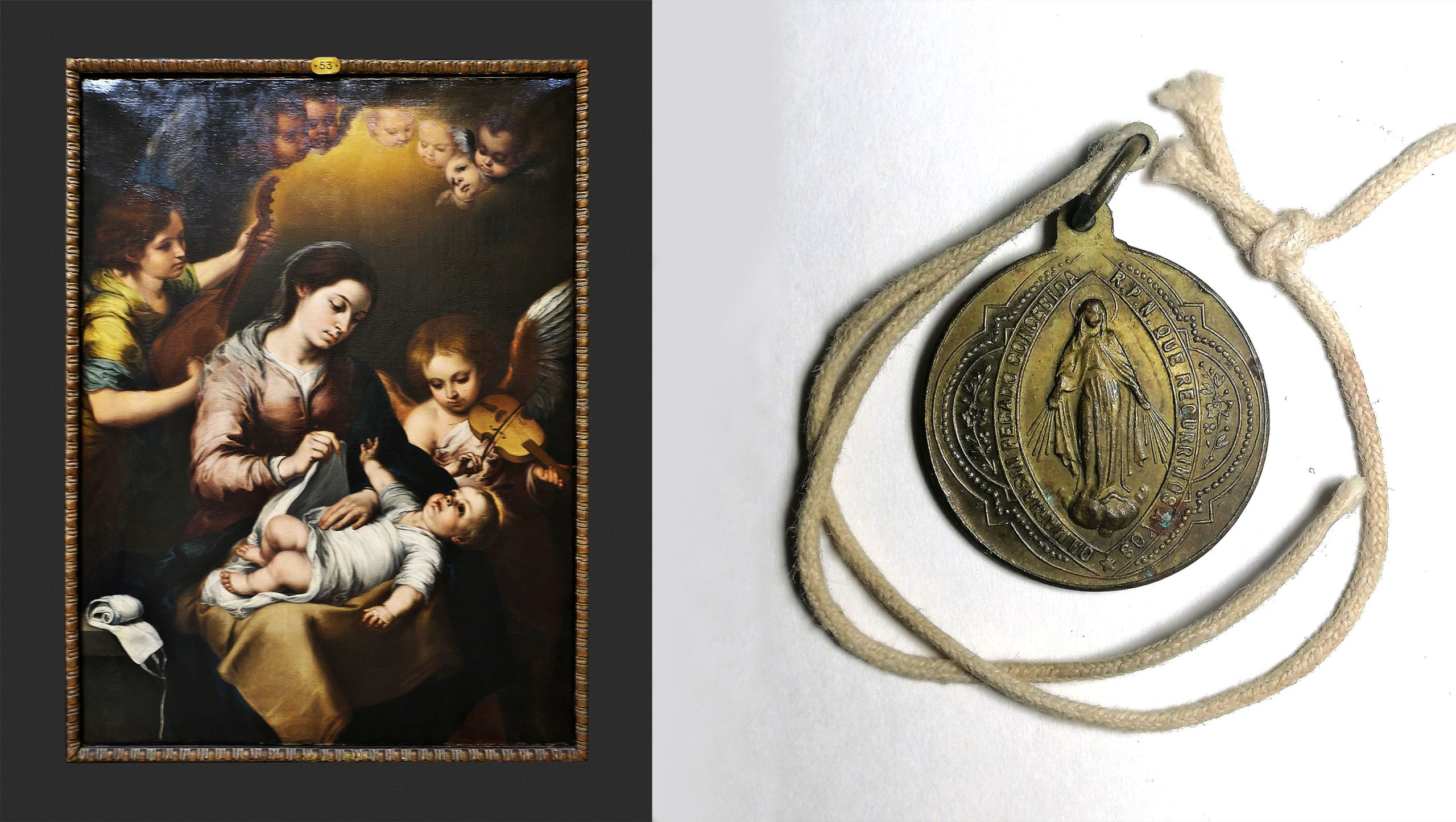The Virgin, Omnipresent.
IV. The Collective Imaginaries
Don Quijote recited one million Hail Marys as he wandered through the Sierra Morena. And who can say just how many images of the Virgin look down upon the faithful from altars, from some niche or other, from atop a pillar or up from the pages of a prayer book? Who can even begin to guess how often her name has been intoned in prayers, exclamations, or in moments of distress? “Hail Mary, full of grace…”. And this is no abstract invocation: the influence of Our Lady penetrates well beyond mere images and words. Many church bells, for example, are given Marian names, and their pealing is the voice of Our Lady.
Catholic history is steeped, then, in holy, religious femininity – in the corporeal world just as in the worlds of dreams, fancy and reverie. We can take the example of the heroine of the Galdós novel, the luckless Fortunata: on the night before being married to a man she found repugnant, she dreamed that Our Lady joined her, in a more genuine matrimony, to her secret lover. She later whiled away the time during the gestation of her second child, the fruit of this forbidden union, by marking the passing of the annual feasts of the Virgin.
This intimacy and fervour appear again and again in countless stories of miraculous births and their accompanying devotional images. Events are related as if Our Lady had been right there in the delivery chamber, soothing the pain, watching over the mother in labour, and giving the newborn its first ministrations.
The miserable fates of the women compelled to keep their maternity a secret, and those of their foundling babies, also took on a religious character. The mothers who gave birth in the Madrid Casa de Maternidad would leave their identities behind at the door, and thenceforth were known only by the name of the hospital bed they occupied during the final days of gestation and the postpartum. These names were always some sort of Marian derivative: Concepción, Encarnación, Esperanza, Dolores, Soledad, Remedios, Rosario, Paz… And then again, the collars placed on the Inclusa foundlings – many of whom had proceeded from the Casa de Maternidad – bore an image of Mary and the words “R.P.N. [Pray for us], we beg thee, Our Lady, born without sin”.
Or we can consider the remarkable paintings that now hang in the Museum San Luis de los Franceses, Sevilla, which in earlier times adorned the Casa Cuna of that city. These depict infants adopted by a second family – the Holy Family itself, no less – and who have been clothed by a new mother, Our Lady. The name itself of the Madrid Inclusa, even, probably derives from a painting that was venerated in the public chapel there. This was an image of the Virgin that a soldier had brought back from the Flemish city of Enkhuizen: the word “Enkhuizen” was gradually transformed into Castilian Spanish “Inclusa” by the local populace.
It has been said that the Cult of the Virgin arose to subjugate and to control women, and that it still does just that: that it is the creation of an institution dominated by men. This could well be the case, certainly. And yet you have to wonder, too, whether these same women, just as sensitive, acute and intelligent in the past as they remain today, didn’t also manage in some way to remould the image of Mary according to their own concerns and preoccupations, to adapt it to their own intimate and personal belief systems, fashioning a Virgin who heard, supported and protected their fallen sisters. [Wolfram Aichinger.]

